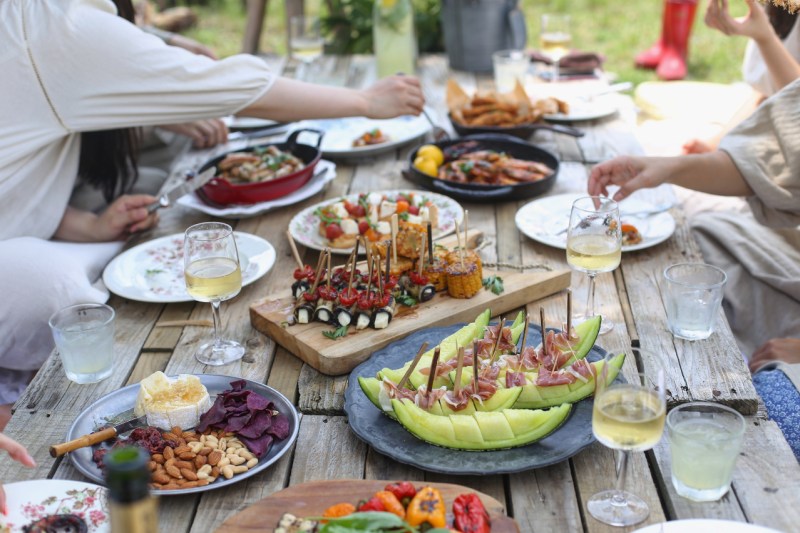Those of a certain age might remember Paul Giamatti’s character in the 2004 movie Sideways (“If anyone orders merlot, I’m leaving.”), and the subsequent tanking of that particular varietal expression. Was that fair or accurate? No. Are there garbage merlots? You better believe it. But merlot is a fantastic grape, wonderful on its own and fabulous in a blend — and this leads to the question: Is there such a thing as the best merlot wine?
If you asked me, I’d say it was a toss-up between two famous producers from Bordeaux’s “right bank” — in other words, wines made primarily with merlot. My first response would be any wine produced by Château Pétrus, especially a Grand Cru. Pétrus, famous since the 19th century, is located in Bordeaux’s subregion of Pomerol. It makes stunningly good wines solely from merlot grapes grown in its blue clay terroir: a wine that’s lush, voluptuous, and silky — with a hint of earthy truffle.
My second choice for best merlot wine would be a blend from Saint-Émilion’s Château Angélus: a blend with spicy, racy cabernet franc. Violets, spice, black fruit, and oak — what’s not to love? But honestly, the only person who should care about my bougie, Francophile wine opinions is me. Therefore, let’s talk about merlot, the grape, as well as its expressions from around the world, as a way of helping you identify your best version.
The merlot grape

Merlot originated in France and got its name from a blackbird called merlau in the Occitan language because it likes to eat the blue-black, early-ripening fruit. The daughter of cabernet franc and sister to cabernet sauvignon, Carménère, and the earthier malbec, merlot is a hugely popular varietal that has been cultivated for centuries.
It’s a robust and versatile grape, less austere and tannic than cab sauv — which means it tends to produce softer, fruitier, and more supple wines when featured or blended. Merlot thrives in all kinds of soil and will take on different aroma and flavor characteristics depending on where it’s grown — and this is great news for us.
Generally speaking, merlot wines taste of red and black fruit: plums, blackberries, blueberries, currants, and the like. They can also have herbal, earthy, and vegetal notes like rosemary, mushrooms, and bell pepper. Its tannic structure can range from brawny to velvety, which roughly translates to either “cellar it for a decade” or “throw it back tonight.” In addition, merlot wines have a decently robust alcohol content, averaging between 13.5 and 15% ABV.
Second only to cabernet sauvignon, merlot is the most planted wine grape in the world. France accounts for the largest number of plantings, where merlot appears in wines mostly from the Southwest appellations: Bordeaux, Cahors, and Bergerac. It’s also found in Provence, the Loire Valley, and several other regions. But, let’s face it — this varietal now belongs to everybody.
Merlot wine from cool climates: Aromas and flavors

Climate, along with soil, has a huge influence on how a merlot wine tastes and smells. Wines produced in cooler climates like France, northern Italy, Washington state, or Canada tend to be lighter bodied and can have a nose of red fruit like plums and cherries, hints of sage, and a more pronounced tannic structure. Because of this, some of these wines age beautifully — and this process will also have an influence.
Wines aged in oak will take on characteristics of vanilla and baking spices. In addition, merlot wines become more complex and profound as they mature, taking on flavors of chocolate and plush aromas of cigar tobacco and leather. In addition to the two Bordeaux wines mentioned above, Masseto from the seaside vineyards of the Bolgheri region in Tuscany is considered one of the best merlot wines in the world.
There are fantastic merlot blends produced in unexpected places, too: Emmeline Zhao, partner and sommelier at Figure Eight and Cora in New York City, recommends Early Mountain Vineyard’s Foothills Red. “Folks might balk at a Bordeaux blend from Virginia — and it’s certainly not a classic representation — but it’s a truly delicious everyday red,” Zhao said. “It’s zippy and energetic, with lots of red and dark fruit, some underlying dried herbs, and a little dusty graphite to it that is so characteristic of merlot. It’s ready to drink and hits way above its price tag.” she noted.
Merlot from warmer climates: A different animal

Merlot has also found stunning success in the sunny climes of Southern California, Tuscany, South America, Argentina, Chile, and Australia. As you might imagine, the wines produced in these regions are altogether different: softer, plummier, with notes of baking spices and black fruit. In addition, these warm-climate merlots tend to be a little sweeter because of longer growing periods and regional viticultural styles.
Although there are some very serious examples produced in Napa and Sonoma counties, some California merlot is sunny, simple, and sweet — with a small percentage of that being basically alcoholic grape juice, which tends to give it a bad rap.
What foods to pair with merlot

Merlot is as versatile with food as it is with flavor. Pair it with foods of a similar seriousness and cost: an inexpensive merlot shines with pizza or barbecue, and a pricey one perfectly complements a rack of lamb, roast duck, or steak au poivre. Generally speaking, think about pairing a merlot with robust dishes, red meats, and dark chocolate. That’s where its soft tannins and luscious fruit profile will really stand out.
In other words, wines from around the world made from this one simple grape can either cost thousands of dollars and cellar for a decade, or be the perfect budget wine pairing with a grilled burger during a summer cookout. That’s about as cool as it gets. What do you think is the best merlot wine?




